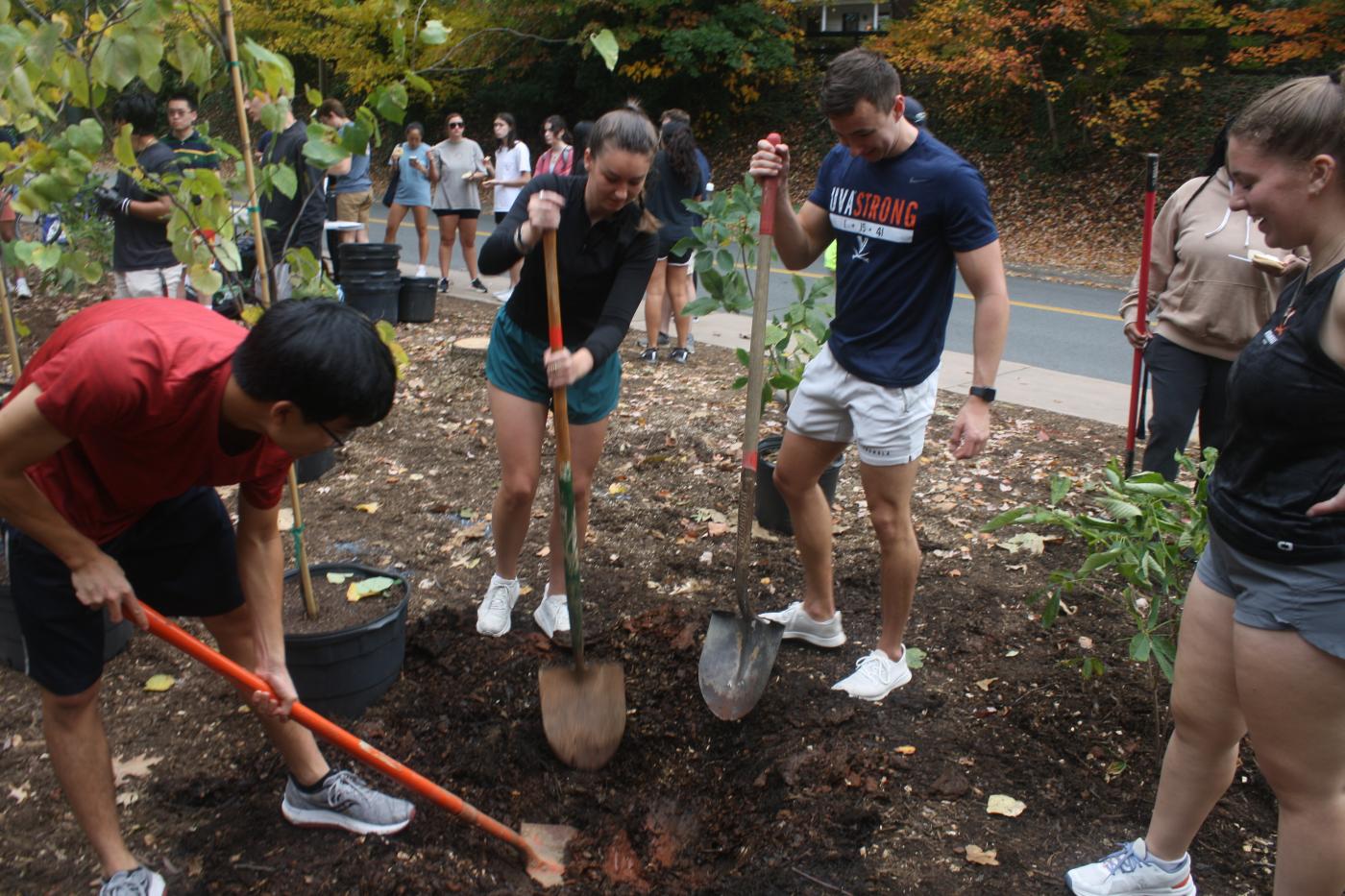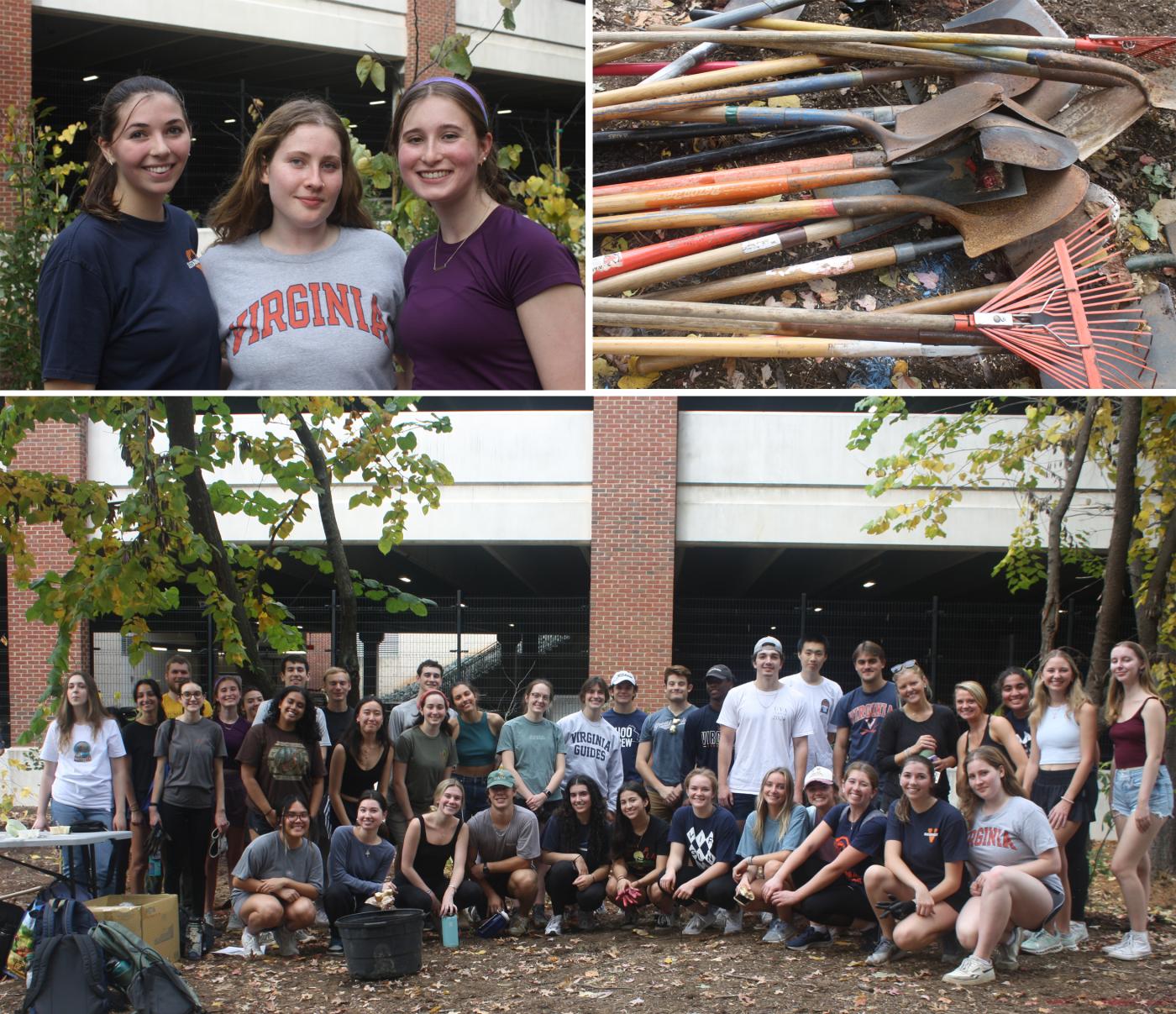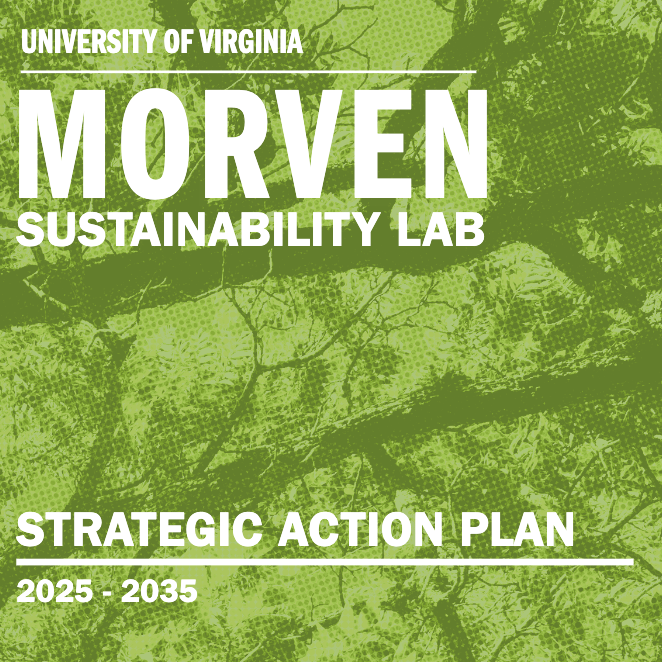
TEAM OF UNDERGRADUATE STUDENT RESEARCHERS CONTRIBUTE TO UVA’S CARBON-NEUTRAL GOAL BY PLANTING FOREST PATCHES ON GROUNDS

In summer 2023, Leah Germain (BS Env. Science ’25), Madeline Morphis (BUEP ’25), and Olivia Vargo (BS Env. Science and BA Global Sustainability ’24) were selected to participate as research fellows in the Decarbonization+ Academy program, an immersive sustainability learning experience for students who are interested in working towards UVA’s goals of being carbon-neutral by 2030 and fossil free by 2050. As part of the Academy, Germain, Morphis and Vargo were paired with Teresa Heinz Professor of Sustainable Communities Tim Beatley and set about researching urban forestry — in particular, Miyawaki style forests, which are densely planted forests that can thrive in compact spaces.
The Miyawaki method was developed in the 1970s by botanist and plant ecologist Akira Miyawaki using species of trees that would naturally occur in a location to restore “native forests using native trees” in his home country of Japan. This method also replicates the regeneration process that occurs naturally when the canopy of a forest opens due to large fallen trees, where the fastest growing saplings survive and quickly mature into a densely packed pioneer forest. In the past five decades, Miyawaki forests have been successfully planted on thousands of sites globally and attributed as a tool for maximizing a forest’s carbon sequestration potential.

Based on the potential of their early-stage research, Germain, Morphis and Vargo proposed a series of forest patches on UVA Grounds that summer, and continued to work together to refine their proposal during this fall 2023 semester with the guidance of faculty research advisor Assistant Professor of Environmental Sciences Charity Nyelele who explores the links between biodiversity, climate change, and ecosystem services. The research team used GIS to quantify how much carbon various forest patches across Grounds were storing and conducted a thorough survey of Grounds to identify places with potential to plant dense forest patches, namely those that were mostly empty or minimally planted with existing trees. Their location-based research, identifying both existing and potential forest sites, was mapped using ArgGIS Pro and developed into a StoryMap that not only serves as an interactive educational tool to raise interest in the project, but was also used to present their potential sites to Senior Landscape Architect Helen Wilson and Associate Director of Grounds Richard Hopkins. In coordination with the Office of the Architect and Facilities Management, five forest patch locations were selected and approved: Carr’s Hill Side Yard, north of Carr’s Hill Field, Hereford, Balz-Dobie House, and Scott Stadium parking garage. For each site, detailed recommendations were also created that included a description of existing conditions, a planting plan, and a forestry management proposal.

In late October 2023, the team leaders realized their first planting day at the Scott Stadium site — bringing together about 100 student volunteers, representing numerous student organizations including Student Planners Association, Lorax Society, Environmental Science Organization, Alpha Phi Omega, and more. Together, volunteers planted a total of 80 trees and shrubs including Black Tupelos, Red Buds, Red Buckeyes, Bee Balm, and Rhododendron in just one hour. The selection of native species, recommended by Helen Wilson, were both identified for their ability to thrive in close proximity to the parking structure and their availability locally.
Building on the success of their first planting day, Germain, Morphis and Vargo look forward to organizing two additional forest patch planting days this upcoming spring — located at the Hereford and Carr’s Hill Side Yard sites. In part this work will be supported by a recent grant of $25,000 the team received from the UVA Arboretum and Landscape Committee (housed within the Office of the Architect) to help with future planting initiatives. The award will be used for future plant acquisition and will allow for more flexibility in plant selection.
“[Our goal is] to have a connected network of forest patches on Grounds, as much of our forested area is currently fragmented,” said Morphis. “…we are optimistic that this project can help make significant strides in the right direction [and] we hope this project provides a lasting framework that can be used to plant more forest patches in the future.”
Student leads Leah Germain (BS Env. Science ’25), Madeline Morphis (BUEP ’25), and Olivia Vargo (BS Env. Science and BA Global Sustainability ’24) would like to acknowledge the support of faculty research advisors Tim Beatley and Charity Nyelele; the Office of the Architect and Facilities Management, especially Helen Wilson and Richard Hopkins; the Arboretum and Landscape Committee; and especially, the student volunteers who participated in the project’s inaugural planting day.


